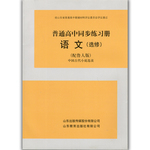题目内容
【题目】Xiaomi’s sales strategy is largely responsible for the decline, having grown indistinguishable from that of many other Chinese manufacturers, according to Hong Kong-based cell-phone market journalist Yasuhiro Yamane. When the company first arrived on the scene in 2011 and 2012, its products were sold online by reservation only, building an air of exclusivity(排外)and lending the brand a high image. This strengthened the appeal of the smart phones, which resembled Apple’s iPhones.
But starting in 2013, Xiaomi began concentrating on high-volume sales, allowing many more resellers to carry its phones—a critical turning point in the company’s fortunes. While sales increased, Xiaomi’s products became viewed less as premium items and more as widely available, mass-market phones, according to Yamane.
To keep consumers from losing interest, Xiaomi introduced a lower-end brand, Redmi, in July 2013. Phones in that family sell for 1000 yuan($150) or less, around half the price of products from the flagship Mi series.
When China’s economy began to skid at the end of 2014, the company leaned harder on the Redmi brand to hold on to market share in the following year—a grave mistake. Though it had some effect, the strategy ultimately “drove home the image of Xiaomi as a low-cost phone maker,” Yamane said.
This should serve as a warning to other makers in China, where companies tend to emerge and quickly disappear due to their focus on short-term gains over long-term planning. “There is still a chance that Xiaomi could right itself and regain its old appeal,” Yamane said.
【1】What made people consider Xiaomi a high image in 2011?
A. The fact that it is expensive
B. The fact that it is different from other Chinese manufacturers
C. The fact that it is like Apple’s iPhones
D. The fact that people could only buy its phones from the Internet
【2】According to the passage, what was Xiaomi’s plan mainly about in 2013?
A. Making Xiaomi more available B. Fixing on Xiaomi fortune
C. Increasing its sales D. Setting its turning point
【3】How did Xioami hold on to market share when the economy declined?
A. . By focusing on long-term planning B. By righting itself
C. By introducing new brands D. By depending on lower-end brands.
【4】Which of the following statement is likely to be Yamane’s opinion?
A. Allowing many resellers to sell its phones is the turning point of Xiaomi
B. The strategy Xiaomi made had no effect at all
C. The companies in China should concentrate on short-term gains.
D. Redmi is popular among all the consumers
【答案】
【1】D
【2】C
【3】D
【4】A
【解析】 本文是一篇议论文。本文主要讲述小米手机的销售下滑的原因是其销售策略不当造成的。
【1】D
细节理解题。根据第一段中的“When the company first arrived on the scene in 2011 and 2012, its products were sold online by reservation only, building an air of exclusivity(排外)and lending the brand a high image.”分析句意可知当小米公司在2011和2012年出现时,它的产品是在线上预订的,这树立了一种唯我独尊的高品牌的形象。可知这是人们认为小米手机形象高的事实。故选D。
【2】C
细节理解题。根据第二段中的第一句“.But starting in 2013, Xiaomi began concentrating on high-volume sales, allowing many more resellers to carry its phones—a critical turning point in the company’s fortunes.”但从2013开始,Xiaomi开始专注于大批量销售,让更多的经销商进行手机销售---在公司的命运是一个关键的转折点。由此可推断出是 增加了销售量。故选C。
【3】D
细节理解题。根据第三段第一句“To keep consumers from losing interest, Xiaomi introduced a lower-end brand,” 为了不让消费者失去了兴趣,(阻止市场份额的下滑)Xiaomi引进了一个低端品牌手机。分析句意可知为了维持住小米在销售市场的地位,引进了一款低端的品牌手机。故选D.
【4】A
推理判断题。根据第二段中Yamane的话可知小米开始专注于大批量销售,让更多的经销商卖手机,小米销售量有所上升。当小米销售增加的同时,小米的低成本,大众化的形象深入人心,这是小米公司销售的一个关键的转折点。故选A。

 海淀黄冈名师导航系列答案
海淀黄冈名师导航系列答案 普通高中同步练习册系列答案
普通高中同步练习册系列答案